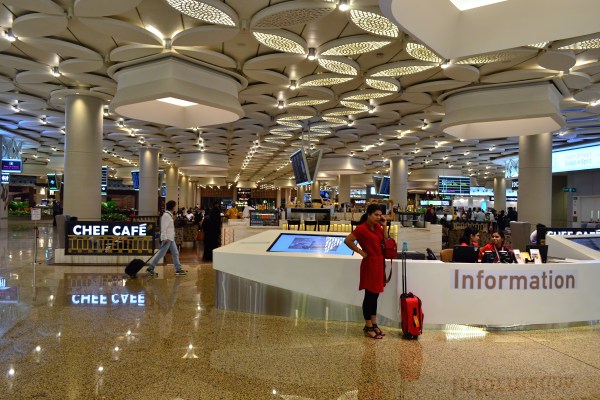Editor’s note: Krish Kupathi is the CEO of Mobiliya.
It took only seconds for Xiaomi phones to sell out on the e-commerce platform Flipkart in India. This feat is staggering considering the Indian e-commerce industry is a relatively new concept for many consumers. In fact, Indian smart phone sales doubled from 156 million sold in 2013 to 364 million units sold thus far in 2014. With a product in such high demand, mobile manufacturers that want to succeed in India must put three things first: customizable products, regional-market sensitivity and trend incorporation.
Google’s product strategy team, which includes many Indian members, understood the necessities and desires of the Indian market. Google designed the Android One specifically to meet the needs of this Indian market segment — often referred to as “the next billion” — which is still transitioning to smartphone technology.
Android One came equipped with dual-SIM card capability, multimedia features such as a camera with video functions, Google Maps services, a wide ecosystem of apps and a free data pass from leading operators. While this may seem like the perfect answer to the Indian market’s needs, Android One devices failed to meet projected sales. At the time of its launch, there were three devices already on the market with identical hardware configurations as Android One, all priced about $1.62 apart. What could Google and Android have done to stand out from their competition?
First, Google and Android could have been more sensitive to the market’s needs. India is a country of many geographies and diverse consumers. When selling to the Indian market, manufacturers must look at each geography individually, rather than attempt to cater to the country as a singular customer.
For example, language is a selling point where value-differentiated products sell most easily. As there are nine major regional languages and many more open markets within India alone, each language pack can be catered to in the same way that manufacturers support a global language list. So, in a country with more than 300 brands selling to approximately 364 million smartphone users, mobile developers need to break the norm.
Google and Android should have also offered customized features. Successful brands hoping to drive smartphone adoption in India throughout 2015 will ensure that their smartphones are tailored to meet each individual’s requirements. To achieve this, manufacturers need a strong network of services, apps and platforms that allow consumers to fully and uniquely customize their own devices.
Mobile users become more tech-savvy and conscious of desired requirements and expectations of their devices each day — as users everywhere buy their phones for a specific purpose. For example, a consumer purchases a smartphone to stay in touch with his wife, to watch videos because he commutes often on the metro and to take photographs during his overseas travels. This phone and its software should be personalized according to his individual behavior in order to optimize its performance and his user experience.
Finally, Google and Android could have better prepared for growing trends. Operating system security, customized services, multimedia capabilities and wearable technology are significantly affecting the success of mobile device sales throughout India, becoming “must have” features for any manufacturer looking to compete effectively in the market.
Indian consumers have started shopping for and purchasing products on their phones — an online behavior that’s only become prevalent in the last year. As mobile devices are used more and more throughout enterprise operations, a secure operating system is imperative. The mobile devices of today, for both personal and business users, must include a security portfolio to take on the Indian and similar emerging markets.
Location-based apps are poised to change the service industry in India, as Indian consumers are not exclusively buying books and clothes online anymore — the emerging market e-consumer is now purchasing myriad services online, as well. Location-based apps and services will change the way Indians buy vegetables, receive food deliveries, take cabs and rent cars. Personalizing services based upon deep integration of users’ smartphones — an ability only device manufacturers have — will redefine what phones are brought into the market, as consumers will begin to depend more on these customized services than the actual devices.
Indian smartphone users will soon have access to long-term evolution (LTE), a standard for wireless communication of high-speed data. With Reliance Jio and Airtel, two leading operators injecting LTE throughout India, consumers can expect lower prices for large data packs, resulting in higher demand for smartphones with multimedia features and apps running on LTE services. Devices catering to this need will have to be on the product line-ups of any original design manufacturers hoping to serve and thrive within emerging markets.
The wearable technology trend is spreading rapidly among Indian consumers, as these devices, such as glasses and watches, will soon be more affordable and accessible for the growing number of smartphone users. According to consulting firm IDTechEx, global spending on wearable technology may rise to $70 billion in 2024 from just $14 billion in 2014. To cater to this growing market, device manufacturers will have to ensure that the platform and app ecosystem is ready to support consumer needs.
To be successful in emerging mobile markets like India, device manufacturers must connect the “next billion” with next-generation technology. Coupled with preparation for new trends, manufacturers must have considerable technical expertise and a strategy that leverages customizable tools and unique features to meet each market’s specific needs. The potential for breakthrough growth is huge and achievable for companies willing to invest the time, money and resources to innovate and provide distinctive offerings to serve segmented markets.
